
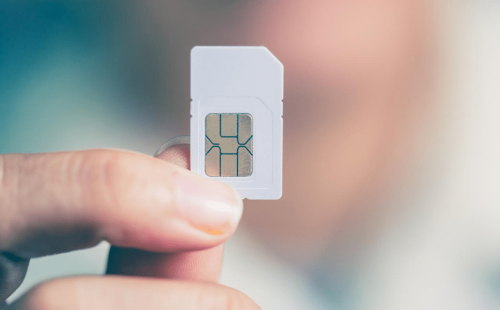
How to choose the right SIM Form Factors for your business?
IoT SIMs, also known as M2M (machine to machine) SIMs, are used for global deployments using cellular connectivity. There is a complete range of SIM Form Factors available to your business. Which one you choose depends on the IoT SIMs requirement of your devices and applications.
What is an IoT SIM card?
An IoT SIM card is a subscriber identity module, which is simply a mini circuit board used to securely store the international mobile subscriber identity (IMSI) number and its related authentication key.
Unlike the SIM cards we use for our private devices, IoT SIMs are more durable and with more memory for handling machine-to-machine communication through data. They also work on different subscription plans designed for global IoT connectivity.
Today IoT SIMs are available in removable (2FF, 3FF, 4FF) or embedded chip format (MFF2).
What SIM form factor is best for my business?
Choosing the right SIM form factor depends on the size and technical specifications of your device.
Removable SIM form factors use the same chip with different plastic casing sizes. For example, the first SIM card size available in history was about the size of a credit or ID card. However, as devices became smaller, so did smaller SIM cards emerge, and this 1FF SIM form factor became obsolete and is no longer in use.

Choosing the right SIM form factor for your IoT device would depend on how much space you can allocate for the SIM. Large devices, such as smart vehicles, wind turbines, and vending machines, can accommodate Mini SIMs, while smaller devices, such as smart trackers, may not have the space for anything larger (or thicker) than a Nano SIM.
What is a Standard 2FF SIM Card?
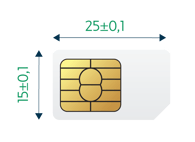
Today's standard SIM is the second SIM form factor (2FF). Also known as a Mini-SIM, measuring around 25mm long by 15mm wide it is the largest available SIM form factor. It is typically used for large IoT/M2M devices, such as vehicles.
What is a 3FF Micro SIM?
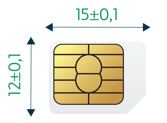
The Micro SIM card is the third form factor (3FF), which holds the same amount of data as a standard Mini SIM. They are smaller size than the standard SIM, measuring around 15mm long by 12mm wide. Cards with this form factor are designed to fit into medium to small IoT/M2M devices, such as tablets or smart health devices.
What is a 4FF Nano SIM?
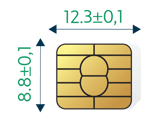
The Nano SIM is the fourth form factor (4FF) and is the smallest removable form factor currently on the market. Nano SIMs are 40% smaller than Micro SIMs, measuring around 12.3mm long by 8.8mm wide and are about 15% thinner. Cards with this form factor are suitable for small devices, such as trackers.
What if my devices vary in size?
For businesses that require flexibility in their SIM form factors or need different factors for testing, there is the multi-cut SIM, sometimes referred to as combined SIM or combi SIM.
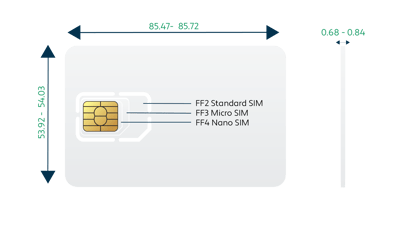 Multi-cut SIMs, also known as Triple Cut or Combined SIMs, encompass 2FF, 3FF and 4FF card plugs within a 1FF casing.
Multi-cut SIMs, also known as Triple Cut or Combined SIMs, encompass 2FF, 3FF and 4FF card plugs within a 1FF casing.
What is an Embedded MFF2 SIM?
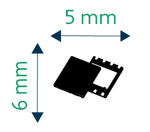
As the name suggests, embedded SIMs are non-replaceable chips soldered onto the device circuit board. MFF2 measures about 5mm long and 6mm wide and is completely vacuum-sealed within the device, making it the most physically secure form factor. Embedded SIMs are also easier to deploy for device fleets, as they are soldered during batch manufacturing.
Embedded SIMs are perfect for IoT devices that are constantly on the move or would be deployed in harsh conditions, such as vibration, shock, very high or very low temperatures or corrosion.
Embedded SIMs are sometimes referred to as eSIMs, creating confusion around the remote provisioning capabilities (so-called eUICC, but also referred to as eSIM) of the form factor. To put it simply, all form factors can support remote provisioning or eUICC, including embedded SIMs, but embedded SIMs do not inherently do so. Read more on eUICC here.
What are the benefits of IoT/M2M SIMs?
IoT/M2M SIMs are special industrial-grade SIM cards that are used to connect devices and transfer data between them. They enable device automation and allow deployment without constant human interaction. IoT SIMs are designed to work in harsh environments and can withstand temperatures ranging from -40oC (-40oF) to +105oC (+221oF), moisture, vibrations or corrosion.
In addition, IoT SIMs can be controlled through a platform. Check out how our Nomad Connectivity Management platform can help you connect both your SIMs and eUICC-enabled cards.
To learn more about IoT SIMs, check our quick guide to everything you need to know about IoT SIMs.
Download your free copy of the SIM Form Factor Infographic.
Speak to a Velos IoT expert
Related articles


Massive IoT projects - Cat-M1 or NB-IoT?
Massive IoT deployment refers to a section of IoT where a high volume of IoT devices are deployed...
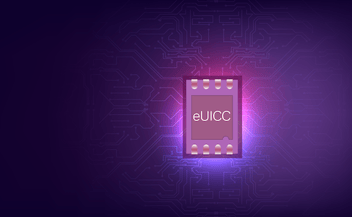
Digging deeper into eSIM: how do expectations meet reality?
The eSIM has been coined the next generation of the SIM card. Its uses are vast and varied, and...
